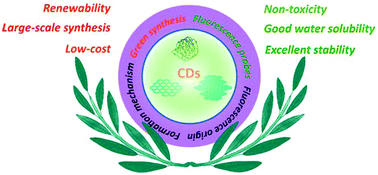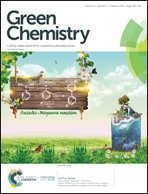Carbon dots: synthesis, formation mechanism, fluorescence origin and sensing applications
Abstract
Carbon dots (CDs) have received an increasing amount of attention because of their significant advantages in terms of low toxicity, chemical inertness, tunable fluorescence, good water solubility, and physicochemical properties. Due to these desirable properties, they have been used in numerous fields, including chemo- and biosensing, fluorescence imaging, and drug delivery. In this review, we aim to demonstrate the recent progress in the green synthesis and formation mechanism of CDs, and provide guidance for developing CDs with the concepts of green chemistry. In addition, we discuss three kinds of most accepted luminescence origins: surface state, quantum confinement effect and molecular fluorescence. Finally, we systematically summarize the latest progress of CDs in fluorescence sensing applications, including both solution phase sensing and solid phase sensing. Furthermore, the challenges and future direction of CDs in this emerging field are discussed.



 Please wait while we load your content...
Please wait while we load your content...